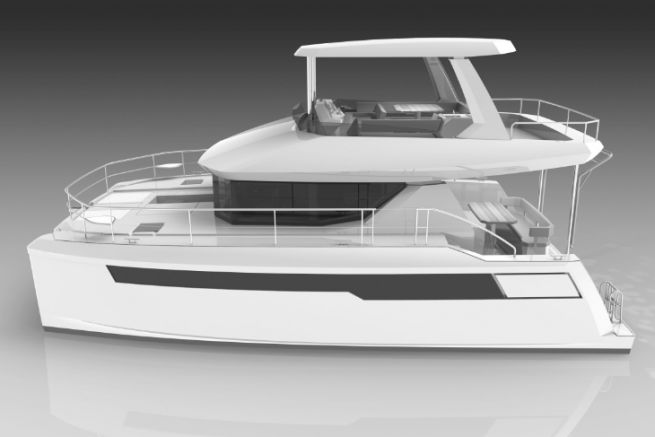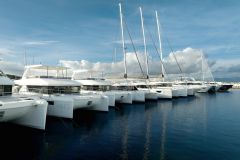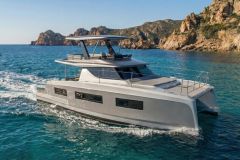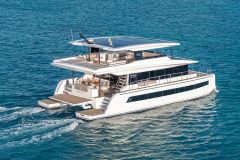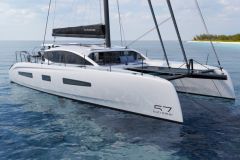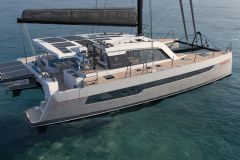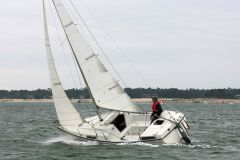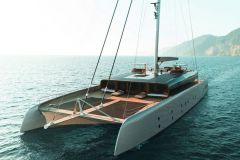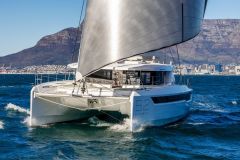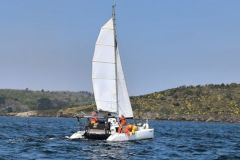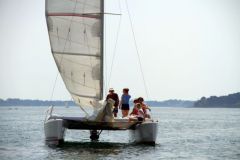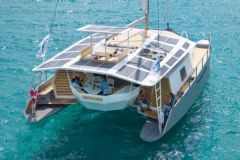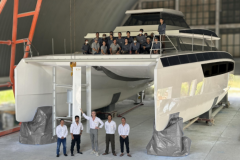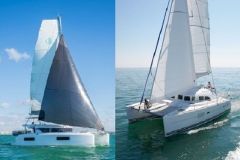A contemporary design
The new Leopard 40PC has a modern design, with a large geometrically shaped superstructure window. Like the 46PC and 53PC, it has a flybridge with a steering position, extended by a roof cap that shades the cockpit. The foredeck is accessible from the gangways or the front door of the saloon and is equipped with sunbeds.
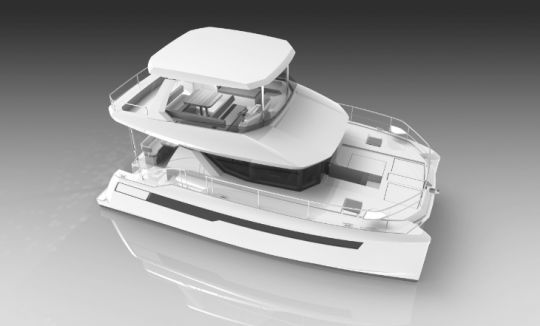
A bright design
The open bay window allows you to enjoy the saloon where you will find a well-equipped L-shaped galley on the port side, a lounge/dining area on the bow and an interior steering position with an uninterrupted view.
The hulls, marked by long windows, house three cabins with sea view beds. Two bathrooms on the port side and on the starboard bow offer a separate shower. The two aft technical areas are isolated and separated and only accessible from the outside.
Several engine powers are proposed, all in shaft line: 2x250, 2x320 or 2x370 HP. The announced cruising speed is 17 knots and the top speed is 20 knots. Lower speeds are possible to increase autonomy.
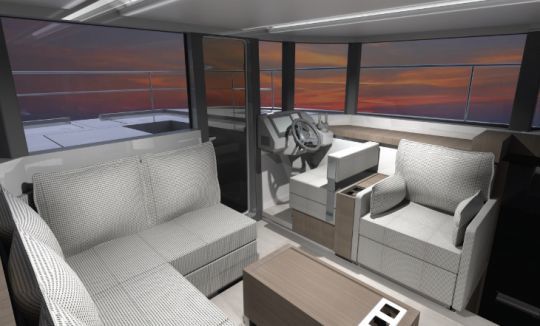
Launching end of 2022
The launch of the first unit is scheduled for late 2022 in South Africa. The boat will be presented in France at the Grande-Motte multihull show in 2023. The Leopard 40PC will also be offered for charter and to owners in a management program at The Moorings (Moorings 403PC).
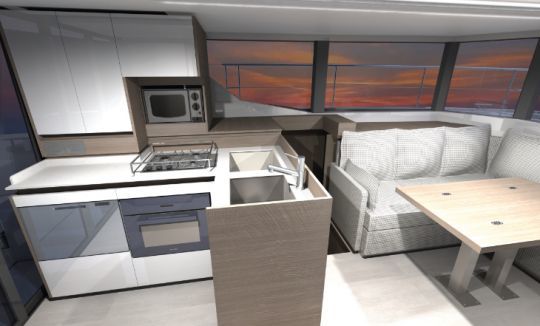
The architect's opinion
"This new Leopard 40PC has been our biggest challenge to date. In fact, it is a smaller version of the Leopard 53PC or 46PC that offers a similar level of comfort and performance in 40 feet. The shorter a multihull is, the more sensitive it is to weight, and the more fragile the longitudinal balance. Intense research on our own CFD (Computational Fluid Dynamics) tools has allowed us to achieve a truly exceptional level of excellence in this size." explains naval architect Alexander Simonis,

 /
/ 